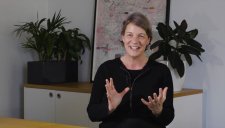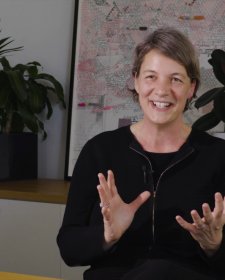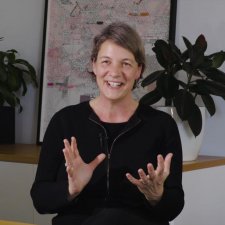I was always a very curious child. I looked around the world and I used to think gosh, how does that plane get off the ground? I had a bicycle and I remember fixing my bike and, like, trying to figure out how every part of it worked. And so as I grew older and older I suddenly realised that I liked things that were difficult. Understanding how things worked was very interesting. At the age of 13 I realised I loved physics. I could see that you could describe the world with words but you could also do it mathematically and that’s what physics was; it’s kind of the combination of both and I just thought that was fantastic.
The research that we’re doing is really designing new hardware, new computer chips of the future. And probably a decade ago people realised if you could encode information on atomic states that you would get this predicted massively increase in computer power. The way that I would visualise it, is in, you know, the world that we live in is digital, it is literally ones and zeros, it’s like black and white and the idea of quantum is it really will turn it into colour. It allows you to encode information in a lot more states than we currently have. And that ability, when it’s realised, is going to allow us to do calculations much much faster than we can.
You know, one of the great things about the techniques that we’ve developed is it’s very open-ended. So, we are you know, at one level trying to build the hardware for a new type of computer and that is a very focused program. But I’m conscious that we’re developing technology that could be used for many other things. And certainly, you know, my goal is really just to see if we can understand the world at the level of atoms. And so we’ve broken it down to the very simplest in our minds system that you can build, that you can mathematically model, that you can visually see. And so combining all those different ways of looking at the world at that length scale is already teaching us how the world is behaving and it’s incredibly complicated, just, you know, one to two atoms to four atoms that we’re putting in. My hope is that that fundamentally is the biggest benefit for what we do, ‘cos we will design new tools and we’ll have new models to understand the world at that level and that will help us to understand how things form. Eventually, hopefully it will help us to understand how the human body forms and how the brain works – that’s the kind of long-term goal that I’d love to see. I’m conscious that that is a lifetime project in itself.













